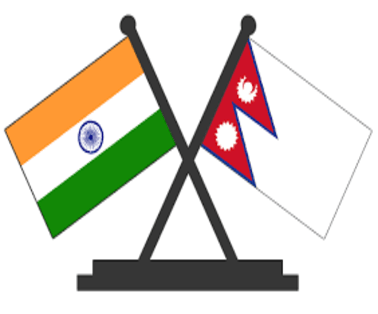In a significant development, Nepal has announced the printing of a new Rs 100 currency note featuring a map that includes the disputed territories of Kalapani, Lipulekh, and Limpiyadhura. This move has reignited a long-standing territorial dispute between Nepal and India, with New Delhi dismissing the revised map as an “artificial enlargement” and “untenable.”
India’s Response to the Kalapani Map Inclusion
- Kathmandu’s decision drew a sharp response from India with External Affairs Minister S Jaishankar saying that Nepal’s move will not change the situation or the reality on the ground.
- Relations between India and Nepal saw a slide after Delhi’s inauguration of a new road in May 2020 from Dharchula to Lipulekh on the Mansarovar Yatra route.
- This angered the then government in Kathmandu – KP Sharma Oli was Prime Minister then – which came out with a new map of Nepal, adding to it an area of 370 sq km at the tri-junction of Nepal, India and China which India maintains is its territory.
- A Constitution amendment Bill was passed by Nepal’s parliament to legitimise the alteration to the country’s map with the addition of Kalapani, Lipulekh and Limpiyadhura.
- The passage of the Bill and the new map led to a temporary breakdown of communication between the two countries.
- The cabinet decision will be sent to the Rastra Bank, Nepal’s central bank, which may take up to a year to get the new note printed. The central bank will have to come out with tenders for printing quality notes.
The Kalapani Dispute
- This battle over the historical accuracy of a geographical territory is one that has been brewing between the two neighbouring countries for the past several decades now.
- The bone of contention is the Kalapani-Limpiadhura-Lipulekh trijunction between Nepal-India and China (Tibet).
- Located on the banks of the river Kali at an altitude of 3600m, the Kalapani territory lies at the eastern border of Uttarakhand in India and Nepal’s Sudurpashchim Pradesh in the West.
- India claims the area is part of Uttarakhand’s Pithoragarh district, while Nepal believes it to be part of its Dharchula district.
- Matters came to a boil, when India opened an 80-km road linking Uttarakhand with Lipulekh, across the disputed piece of land.
History Of The Kalapani Dispute
- Nepal’s borders are defined by rivers as per the treaty of Sugauli, under which the country’s borders were demarcated.
- The treaty was the result of a war between the Gorkha Kingdom of Nepal and the British East India Company, which lasted two years.
- Under this treaty, when the borders were marked, it was decided that on the western side, Kali river will mark the border, while on the eastern side, River Mechi will be the border.
- So, when a river becomes a country’s border, the origin of the river becomes crucial. In the Sugauli treaty, the Nepali side and British East India Company did not sign on any maps.
- The maps of the British East Indian company, in the years following the treaty, show that the origin of the Kali river was near the Limpiyadhura pass, on the western side.
- However, realising the trade importance of this pass, over the next few years, the British East India company shifted the boundaries to the east of Kalapani.
- The monarch who ruled Nepal didn’t raise an objection, and over a period of time, this became the border between India and Nepal.
The Kalapani Dispute Background
- For more than a hundred years there was no dispute between India and Nepal over this trijunction.
- In fact, during the 1962 war with China, India had deployed troops at the trijunction to check Chinese aggression.
- Even now, Indian troop deployment continues in many parts there. Similarly, pilgrims going to the Manasarovar shrine take the road via the Lipulekh pass.
- But the situation changed in the 1990s when Nepal shifted from a monarchy to a democratic government. The newly elected government raised objection regarding this trijunction with India.
- Since then, the border dispute has been a serious issue between India and Nepal. In an attempt to solve this, in 2000, the then Indian prime minister Atal Bihari Vajpayee had agreed to conduct field surveys at the border.
- However, this process did not go further as India refused to remove troops from the trijunction until the process was over.
- Similarly, in 2015, India and China agreed to use Lipulekh to further trade between the two countries. The then Nepalese prime minister Sushil Koirala raised strong objections to the deal.
The Kalapani Dispute Territorial Claims
Nepal’s Stand
- Kali river originates from a stream at Limpiyadhura, north-west of LipuLekh. Thus Kalapani, and Limpiyadhura, and Lipu Lekh, fall to the east of the river and are part of Nepal’s Dharchula district.
- Lipulekh was deleted from the country’s map by the kings to get favours from India.
- The territory of Kalapani was offered to India by King Mahendra after the 1962 India-China war who wanted to help India’s security concerns due to perceived lingering Chinese threats.
- Kalapani was not a part of Nepal-India dispute. It was Nepal’s territory that the king had allowed India to use temporarily
- The new map is in fact a document that was in circulation in Nepal till the 1950s.
India’s Stand
- Kali river originates in springs well below the Lipu-lekh pass, and the Sugauli Treaty does not demarcate the area north of these streams.
- The administrative and revenue records of the nineteenth century also show that Kalapani was on the Indian side and counted as part of Pithoragarh district of Uttarakhand.
Importance Of Lipulekh Pass
- Apart from the Kali river, the Lipulekh Pass also is a point of issue. Forming the top of the Kalapani valley, it forms the Indian route to the Kailash-Mansarovar pilgrimage route.
- Of the many passes in the Himalayas, the Lipulekh Pass is the one that is strategically important as its access offers the direct to the nearest Indian state or the National Capital Region itself. In the event of a war with China, this pass can be a cause for concern.
- The importance of the Himalayan passes was highlighted during the Sino-Indian conflict of 1962 when weakly guarded passes resulted in a military defeat for India.
- Defence analysts are of the opinion that King Mahendra was concerned that the Indian military would take the Kalapani region in order to secure the mountain passes.
- As such he preemptively handed over the region to India. About 18 military outposts along Nepal’s northern frontiers were set up but following bilateral negotiations in 1969, all the posts were removed barring Kalapani.
To Download Monthly Current Affairs PDF Click here
Click here to get a free demo
Discover all about CLAT Exam



